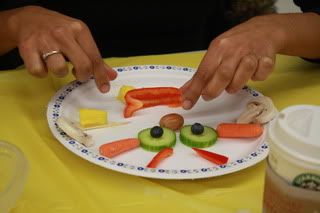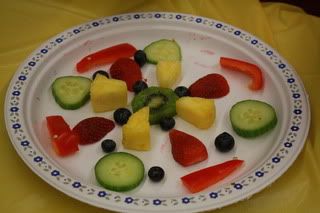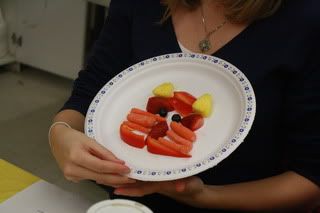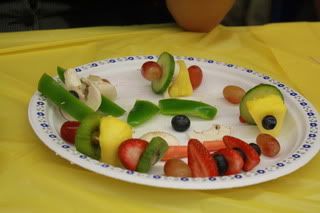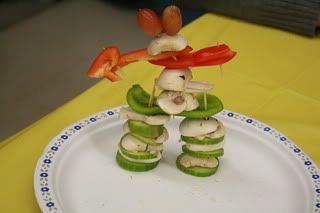
Lesson Plan Stephanie Brown Grade 2
Objective: students will meet language art, health, and art outcomes by actively listening and discussing the book "The Wolves in the Walls" by Neil Gaiman and using artistic mediums to reflect on the book. The book is themed for Halloween. The lesson will take place Thursday October 29th from 12:30-150. The book features a cubist style of artwork with surreal tones that integrates many mediums by Dave McKean. The art technique taught will emulate the books artwork.
Supplies:
- "The Wolves in the Walls" by Neil Gaiman art by Dave McKean
- wide white water coloured paper for each student- found in art supply room
-oil pastels of various colours- found in art supply room
-water colour paints and paint brushes- found in art supply room
-large bucket for dirty water- brought in by teacher (stef)
-small individual containers for water for each child- brought in by teacher (stef)
-paper towel
-area for work to dry
Setup/Instructions
1)Setup will take place during the students lunch hour. All supplies will be brought to the classroom ready to use but will not be placed on desks as this will make it difficult for students to listen to the book first. Setup is expected to take about 15 minutes of lunch time.
2) Once children are inside and settled they will be invited to the reading area. I will introduce the book and ask them what sort of things they notice about the cover, the art, and what they predict the story may be about. This should take 5-7 minutes.
3) Next, I will read the story pausing to ask them questions about the emotions in the book, the art, their observations, and what they think will happen next. This should take 15 minutes depending on level of interaction by students.
4) Transition back to tables, have helpers handout paper and pencils. This should take 2-5 minutes. Do not tell them all instructions at once, give them one at a time so they don't jump ahead.
5) Brainstorm the feelings present in the book. Identify the scary animal of the book and brainstorm scary animals. Have students select one animal and one feeling for the art activity. This may require lots of discussion. 10 minutes max. Don't let them over think- remember the artist used cubism so the animals do not always look realistic. Hand out other supplies while they do the next step (6).
6) Ask children to draw a pencil drawing of their animal and then outline it with pastels. While they are doing this I will hand out paint and water. Encourage them to make it a quick light drawing and not to worry about perfection. I will have an example to show class. 15 minutes.
7) Demonstrate how to use the water colour and parallel this with the images in the book. Tell children to pick colours they feel represent the emotion they brainstormed. Allow them to paint over their oil pastel drawing. This will create a relief and look very similar to the book and very professional. Allow them the rest of the day to do this.
8) Depending on how fast children finish they can either create another image, or because the paint will dry quickly have a class discussion about the images. If it takes them until the end of the day to finish they can set work aside to dry and reflection can become a follow up activity.
9) Cleanup consists of dumping dirty water in bucket, collecting paints and oil pastels, and cleaning up any spills. Should take no more than 10 minutes with student participation
Specific outcome goals:
Language Arts: 1.1, 1.3, 1.4, 2.3, 4.12, 4.15, 4.16, 4.18, 4.19, 4.20, 4.21, 6.1, 6.2, 8.1
Health: A 1.1 (How did the girl know about the wolves? What senses did she use?)
Art: 1.1.1, 1.2.1, 1.3.1, 2.1.1, 3.3.1, 4.1.1, 4.2.1, 5.1.1, 5.2.1

